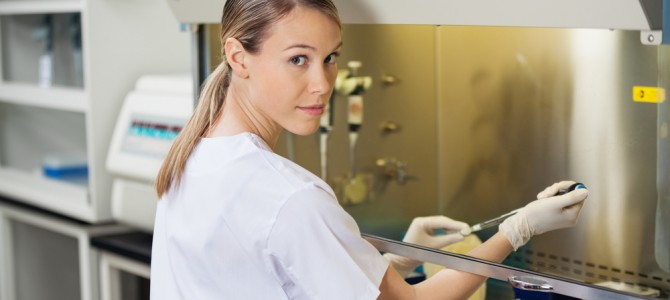
Last week in Time magazine, after two weeks of fallout, Planned Parenthood found someone to support their questionable fetus part-selling practices.
“Why I Donated Fetal Tissue After My Later Abortion”: http://t.co/v6SECWZmFS via @TIME #StandWithPP
— Planned Parenthood (@PPact) July 27, 2015
The mother in question had an abortion nine years ago due to severe medical challenges with her baby. One can imagine just how hard it was to make such a difficult decision after wanting so very much to meet your healthy baby. I feel for Katie Lyon, and can imagine the heartbreak one would feel when faced with such bad news. I’m not here to reconsider the decision she made, but I do want to parse the claims being made because of a heartbreaking situation.
I feel fortunate that I had the chance to donate the tissue — I was able to turn my pain into something that could benefit someone else.
I want people who are politicizing the option to donate fetal tissue to think about the implications of removing this option. I want them to think about people suffering from diseases such as Alzheimer’s, Parkinson’s, ALS and sickle cell disease — and to consider those people’s family members who no doubt want their loved ones to live longer, fuller lives.
Why would anyone want to destroy the chance to save another person’s life?
This pregnancy, its termination, and subsequent donation happened more than nine years ago. It did not, unless the author failed to acknowledge, happen at a Planned Parenthood facility. It certainly did not occur during the period the fetal-harvesting videos reveal Planned Parenthood’s alterations of abortion procedure and financial compensation for baby organs and tissue. So her story has no tie to the “less than five” Planned Parenthood clinics that trade fetal organs and tissue for some monetary amount, as Planned Parenthood President Cecile Richards confirmed on ABC’s “This Week.”
Let’s See Some Proof, Cecile Richards
Second, while I understand the desire to try to find something good in a tragic outcome, Lyon’s article doesn’t substantiate her claim that her child’s donation benefited someone. What change or discovery has come from “the spinal bifida research project funded by the National Institutes of Health” that she donated tissue to? None is mentioned.
This talking point has been rolled out repeatedly. Every time Richards insists lives may be saved from the baby body parts trade, she never highlights an actual scientific discovery: “What happens in this country, at Planned Parenthood and other hospitals is that, women in very few places are allowed to donate fetal tissue for life-saving medical research. Research, you know, developing cures for Parkinson, even the Ebola vaccine.”
In previous attempts to use fetal tissues to treat Parkinson patients, side effects forced an end to that investigation. As scientists continued with another technique that used dopamine nerve cells they obtained from fetal tissue, they noted that this line of investigation has its limits for Parkinson’s: “It is very difficult to obtain dopamine nerve cells from fetal tissue, he said. It would be far easier to grow the cells in a laboratory from stem cells, he noted. There have been no stem cell transplants as of yet for Parkinson’s patients.”
Fetal Tissue Therapies Aren’t Very Promising
This theme is prevalent again and again in the research in fetal tissue. Any applicable treatment is hampered by the difficulty of use and scarcity of the source material. Fetal tissue has severe limitations in applications outside of basic research.
Why does this matter? For one, the $76 million taxpayer dollars the National Institute of Health spent on fetal tissue research in 2014 need to actually improve health outcomes for patients if it’s to live up to its promise of saving lives. NIH is projected to spend the same amount per year in 2015 and 2016
There are only 19 active or completed clinical trials using fetal tissue shown at Clinicaltrials.gov. Many also use tissue sources that don’t require killing babies, such as from umbilical cord blood and foreskin from circumcisions. The study in that database that primarily uses fetal tissue is titled “Safety Study in Retinal Transplantation for Dry Age Related Macular Degeneration.” It aims to “test the safety of transplanting human fetal neural retinal tissue and retinal pigment epithelium into the eyes of human patients with age-related macular degeneration.”
In other words, they want to graft fetal neural retina tissue onto the eyes of elderly people with failing eyesight. If the study improves the eyesight of the elderly better or cheaper than laser surgery, supply is going to be an issue. This is where science and research meet supply and demand, i.e. reality. If you are going to fund and investigate a procedure that will never be scalable in the real world, unless our society decides to increase abortions and fetal harvesting to help improve the eyesight of the elderly, science is going to have to invent another way to solve these problems.
We Can Research Cures Without Killing Babies
Combine this difficulty with ongoing shift to earlier abortions, often using chemicals, and we can see this supply issue will not only persist but worsen. Furthermore, fetal DNA is detectable in mom’s blood, and tests now can identify major chromosomal challenges as early as ten weeks. Combine this with an uptake in Plan B or Ella , a push for widely available over-the-counter birth control, and it looks like we will see abortions lessen and all but disappear after 12 weeks, which would be more on par with the laws of other modern western cultures. Assuming our society continues to want abortions (at a minimum) to be safe, legal, and rare, science knows already that fetal tissue is a poor source for the next lifesaving cure.
This means scientists will have to find another way to investigate new medical discoveries. As my previous article explains, they already have found many alternatives.
Fetal tissue has transportation challenges and availability issues for researchers, besides the cloudy ethics of harvesting fetal organs that the Planned Parenthood scandal has highlighted. While the government is behind the times and still pouring $76 million a year into this research, many others are already moving on to more reliable alternatives with less ethical challenges and better supply. Richards’s claim that vaccines rely on fetal tissue donations has already been proven false, as the cell lines used for vaccine production can be replicated with no need for future fetal deaths. Stem cell technology is where the industry is already going.
Despite the long history of using fetal tissue in medicine and research, the practice could be on the way out. Even though it has led to important medical advances in the last several decades, ‘in the future, the need for fetal tissue will go down because of advances in stem cell [technology] that will take over,’ [Insoo Hyun, associate professor of bioethics at Case Western Reserve University, told CNN.]
Even the CEO of StemExpress, which buys baby parts from Planned Parenthood, was quoted in March 2015 as saying “Stem cells and regenerative medicine are the future of medicine, and we’re doing that together, right here in El Dorado County.” The article discusses the benefits of cord blood donation and new techniques that use a patient’s own blood cells before chemotherapy to help treat cancer.
Richards should stop using the smoke and mirrors of “potential for saving lives” as an excuse for ending lives in her clinics. It does not justify the poor standard practices Planned Parenthood staff have endorsed. Richards has not identified one specific modern advance that has resulted from fetal tissue her clinics have generated. Nor will she. She will only allude to how it “could,” never considering whether it should. It’s a question worth asking, especially in light of how science is already finding better ways to produce these materials.









